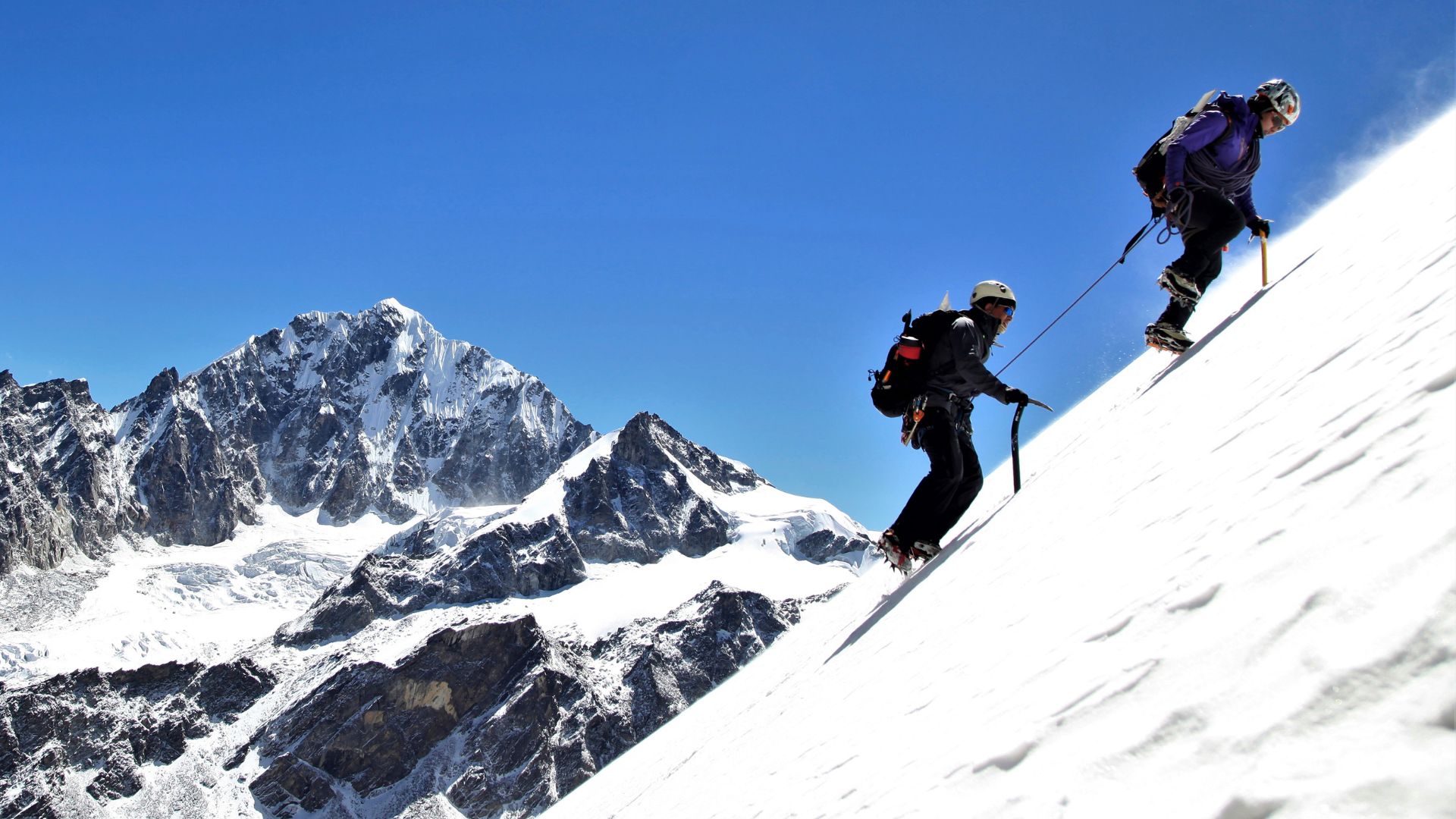
24 Oct How to Prevent Altitude Sickness – A Beginners Guide
Embarking on a high-altitude trek can be an amazing adventure. The excitement of reaching tall peaks and seeing beautiful views is a unique experience. However, it’s crucial to be aware that altitude illness can turn your dream trek into a nightmare. Don’t worry though! In this detailed guide, we will discuss six basic and important rules to prevent altitude illness. With this information, you can fully enjoy your trek and ensure a safe return home.
Rule #1: Recognise the Symptoms
Before we ascend to higher altitudes, let’s start with the basics – recognising the symptoms of altitude illness.
There are three primary forms to be aware of: Acute Mountain Sickness (AMS), High-Altitude Pulmonary Edema (HAPE), and High-Altitude Cerebral Edema (HACE).
AMS, the most common form, typically begins with a headache, often accompanied by nausea, vomiting, fatigue, weakness, dizziness or lightheadedness, loss of appetite, difficulty sleeping, and a rapid heart rate.
HAPE presents with severe shortness of breath, rapid and shallow breathing, a persistent cough producing pink frothy sputum, chest tightness, rapid heartbeat, bluish or greyish skin, and fatigue.
On the other hand, HACE is characterised by a severe, unrelenting headache, confusion or disorientation, difficulty walking or lack of coordination, unusual changes in behaviour, hallucinations, nausea, vomiting, and even loss of consciousness or coma.
Understanding these symptoms is your first line of defence against altitude illness.
To help you identify these signs early on, we have prepared an assessment guide in our complete Guide to Altitude Illnesses ebook, which we’ll discuss further in this article. You can download your copy HERE.
Rule #2: Focus on Fitness and Ascend Slowly
Now that you can recognise the symptoms, let’s talk about physical fitness and pacing, the second rule of altitude illness prevention. Your fitness level plays a crucial role in reducing exertion at altitude. To minimise the risk of AMS, maintain a gradual and measured pace when ascending. Aim to gain no more than 300 to 500 metres in altitude in a single day. Additionally, for every thousand metres gained, schedule an acclimatisation day.
During an acclimatisation day, stay at the same altitude for two nights. Going for a walk to a higher height during the day, unless extreme fatigue warrants a day of rest. It’s important to note that a mistake the most physically fit individuals can make is pushing harder because they are fitter, which increases exhertion and it’s the level of exhertion that can increase your susesptability to getting sick… so get fit and go slow!
Rule #3: Stay Properly Hydrated
Staying hydrated is a key component of altitude illness prevention. At high altitudes, the atmosphere is exceptionally dry, leading to faster dehydration. While proper hydration may not directly prevent altitude illness, it can provide some protection. If you experience a headache at altitude, begin by drinking about a litre of water and observe its effect. If the headache persists, consider taking an Ibuprofen and wait for the symptoms to subside before ascending further.
Above 3,000 metres, your body loses twice as much fluid as it does at sea level. To combat this, increase your daily water intake by one to one and a half litres, totalling about three to four litres daily. However, be cautious of hypernatraemia, a condition that can result from excessive plain water consumption, leading to a dangerous loss of sodium.
Rule #4: Monitor Sleeping Altitude
Sleeping altitude is another critical factor in altitude illness prevention. Aim to sleep at an elevation between 300 and 500 metres higher than your previous night’s rest. For every thousand metres gained, spend two nights at the same altitude as explained previously .
If you do have to go higher for example if you are crossing a high pass, just make sure that when you are coming down the other side, where you sleep is only 3-5600m above your initial sleeping height from the previous night. This consistent approach to sleeping altitude helps maintain safety.
Rule #5: Regularly Monitor Your Body
A simple yet effective way to monitor your body for altitude illness is to use the Lake Louise Score System. This invaluable tool is easy to use and readily available. The latest version of this system has removed sleep-related questions, making it even more accurate. Watch the video to see how to get your own score sheet for free
Rule #6: Consider the Use of Medications
Medications can be a helpful tool in preventing altitude illness, although they are not a guaranteed solution. The most common prophylactic medication is Acetazolamide, known as Diamox. The standard dose for Diamox is 125 milligrams twice daily, typically available in 250-milligram tablets. If you’re obtaining Diamox in places like Kathmandu, be aware that dosage levels may vary, so adjust accordingly.
For first-time trekkers at high altitudes following a fixed itinerary or trekking with a group, Diamox is highly recommended. Another medication worth mentioning is NSAIDs, such as Ibuprofen, which some studies suggest can serve as a prophylactic. However, it’s important to note that Diamox is generally more effective. The standard dose for Ibuprofen as an altitude illness preventative is 600 milligrams three times daily.
Remember, I’m NOT a doctor, so it’s essential to consult a healthcare professional before taking any medications. Avoid taking other medications like strong painkillers and sleeping pills, as these can depress your breathing rate and be detrimental at high altitudes. However, if a doctor has prescribed other drugs, excluding Diamox, due to your symptoms, refrain from ascending further.
In summary, altitude illness prevention boils down to these six essential rules:
- Recognise the symptoms.
- Focus on fitness and ascend slowly.
- Monitor sleeping altitude.
- Stay properly hydrated.
- Regularly check for changes in your body.
- Understand medication options, their usage, and timing.
These rules are your compass for a safe and enjoyable trek. Additionally, consider a flexible itinerary to accommodate the differing paces at which people adapt to altitude. Flexibility can make your trek more comfortable and enjoyable.
Bonus: Access the Lake Louise Score System and Complete Guide to Altitude Illnesses Ebook for FREE!
As promised, we want to provide you with access to valuable resources for altitude illness prevention. To learn more about the modified Lake Louise Score System and gain access to your own copy, watch our YouTube video below. There is a PROMO code on the screen of the video.
Once you’ve got your promo code go HERE for a comprehensive guide to altitude illnesses, including detailed assessment guides, prevention strategies, and more.
You should always be wary of Altitude sickness, even if you are a pro but with these six rules of altitude illness prevention at your fingertips, you’re equipped to conquer high-altitude treks a lot more safely and confidently.
Remember to respect the mountains, listen to your body, and consult a healthcare professional for personalised advice.
Visit the links below to learn more and start your adventure journey now!
PS: Planning an adventure?
Start Here with 5 simple ways I can help you now!
STEP #1 FREE TRAINING
Get our free training
STEP #2 BOOK
Get the Complete Guide to Altitude Illnesses handbook
STEP #3 LECTURES
Get the Altitude workshops course
STEP #4 DASHBOARD
Get the ADVENTURE PLANNING DASHBOARD
STEP #5 TRAINING & PREPARATION
Need help focusing on what you need to do?



No Comments